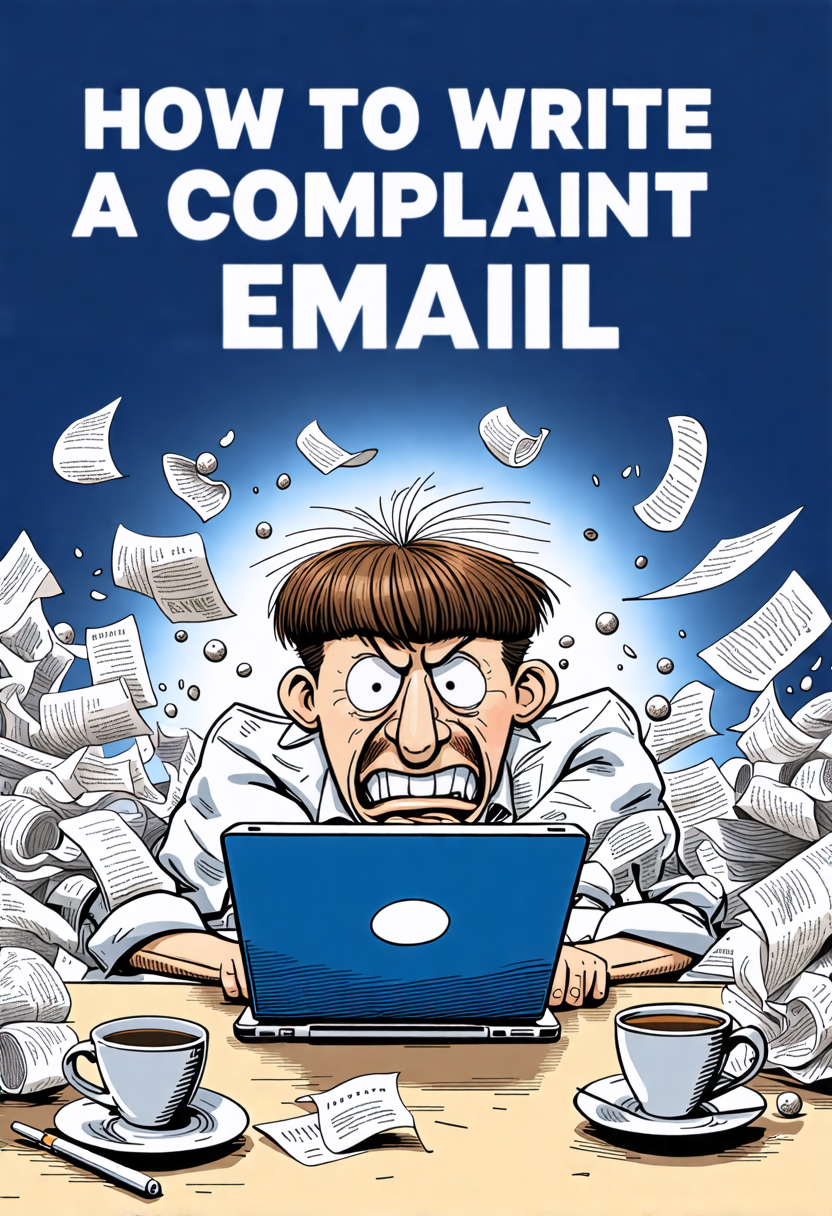How to Write a Complaint Email?
To write a complaint email, follow these eight steps. First, understand why you’re writing and what you hope to achieve. Next, make sure the timing is right—act quickly while the issue is fresh. Find the correct contact person or department to address.
Begin your email with a respectful greeting. Clearly summarize the problem, detailing what went wrong, when, and where. Explain the impact this issue has had on you. State what resolution you seek. Lastly, attach any relevant documents and maintain a professional tone throughout.
Understand the Purpose
Understanding the purpose of a complaint email is essential for effectively communicating your dissatisfaction. A complaint email lets you voice your concerns about a product, service, or experience. It’s a formal way to express what went wrong and seek a resolution.
By writing a well-crafted complaint email, you can address your issues politely and professionally. It’s important to stay clear and concise, avoiding unnecessary details. This helps the recipient understand your problem quickly and work towards a solution.
Decide When to Write
Knowing when to write a complaint email can make the difference between resolving an issue quickly and letting it spiral out of control. Write a complaint email when the problem is serious and can’t be discussed in person. If you’ve tried other ways to fix the issue without success, it’s time to send an email.
Don’t wait too long—address problems while they’re still fresh in your mind. If the issue affects your work or personal life in a substantial manner, it’s a good idea to write. Use the cc function if you need to involve managers or HR for a record.
Choose the Right Contact
To guarantee the best results, make sure you address your complaint email to the right person or department.
Start by researching who handles complaints within the company. Check the company’s website for a customer service contact or a specific email address for complaints. If you’re unsure, call the company and ask for the best contact.
Addressing your email to the correct person guarantees that it reaches someone who can actually resolve your issue. Avoid sending your complaint to a general email address or someone not involved in the matter. This can delay the process and reduce the chances of a quick resolution.
Start With a Greeting
After identifying the right contact, start your complaint email with a polite greeting. A simple ‘Dear [Name]’ or ‘Hello [Department]’ works well. This sets a respectful tone from the beginning.
Avoid using casual greetings like ‘Hey’ or ‘Hiya’ as they can seem unprofessional. If you don’t know the recipient’s name, ‘To Whom It May Concern’ is acceptable, though it’s better to find a specific contact if possible. Use appropriate titles like Mr., Ms., or Dr. if you know them.
Summarize the Issue
Clearly state the problem you’re facing with the product, service, or experience. Be direct and specific about what’s wrong. Avoid vague terms. Instead, describe the issue clearly. For example, ‘The laptop I purchased isn’t turning on’ or ‘The meal I ordered arrived an hour late and was cold.’
Briefly mention when and where the issue occurred. This helps to set the context. If you dealt with a specific person or department, include that information too. Your goal is to give a quick overview that highlights the main issue.

Provide Key Details
Share specific details that will assist the recipient in fully understanding the issue. Mention the product or service involved, dates, and any relevant order numbers or identifiers. Be clear about what happened and where the problem occurred. Including these details guarantees that the recipient can quickly locate your case and take appropriate action.
Here’s a sample table to help organize key details:
| Detail Type | Example | Description |
|---|---|---|
| Product/Service | ABC Laptop | Model XYZ, purchased on April 1, 2023 |
| Order Number | #123456 | Found on the receipt or order confirmation email |
| Issue Date | April 10, 2023 | Date when the problem was first noticed |
| Description | Screen malfunction | Screen flickers and shows lines |
Describe the Impact
The issue you’re facing has likely disrupted your routine or caused you inconvenience. It’s important to clearly state how this problem has impacted you.
Maybe it’s wasted your time, cost you money, or caused you stress. Describe these effects in simple terms.
For example, if a product malfunctioned, explain how it affected your daily tasks. If a service was poor, detail how it failed to meet your expectations.
Be specific but concise. Mention any deadlines you’ve missed or extra costs you’ve incurred.
State Desired Outcome
You need to specify exactly how you want the issue resolved. Clearly state what you expect from the recipient. Do you want a refund, replacement, repair, or another form of compensation? Be precise. For example, if you want a refund, mention the amount and method. If you desire a replacement, describe the product and any specific features. Providing clear instructions helps avoid misunderstandings and speeds up the resolution process.
Explain why this outcome is fair and reasonable. Being specific shows you’ve thought about the solution and makes it easier for the recipient to act.
Always include a time frame, such as requesting a response within a week. This sets clear expectations and prompts timely action.
Attach Supporting Documents
Attaching supporting documents strengthens your complaint by providing clear evidence of the issue. Include relevant items like receipts, order numbers, photos, or screenshots that highlight the problem. These documents make it easier for the recipient to understand the situation and take action.
When attaching files, make sure they’re easy to read and directly related to your complaint. Label each attachment clearly so the recipient knows what they’re looking at. This helps avoid confusion and speeds up the resolution process.
Maintain Professionalism
How can you maintain professionalism while expressing your dissatisfaction? Always use polite language. Avoid emotional or aggressive words. Focus on facts and be clear.
Here’s a quick guide to keep your email professional:
| Dos | Don’ts |
|---|---|
| Use polite greetings | Use slang or jargon |
| Be concise and clear | Write long-winded rants |
| Proofread for errors | Send without revising |
Address the recipient respectfully. Use a formal salutation like “Dear [Name]”. Stick to the issue at hand without veering off-topic. Keeping your email focused shows maturity and seriousness. End with a courteous closing, such as “Sincerely” or “Best regards”. This maintains a positive tone, even when you’re upset.







